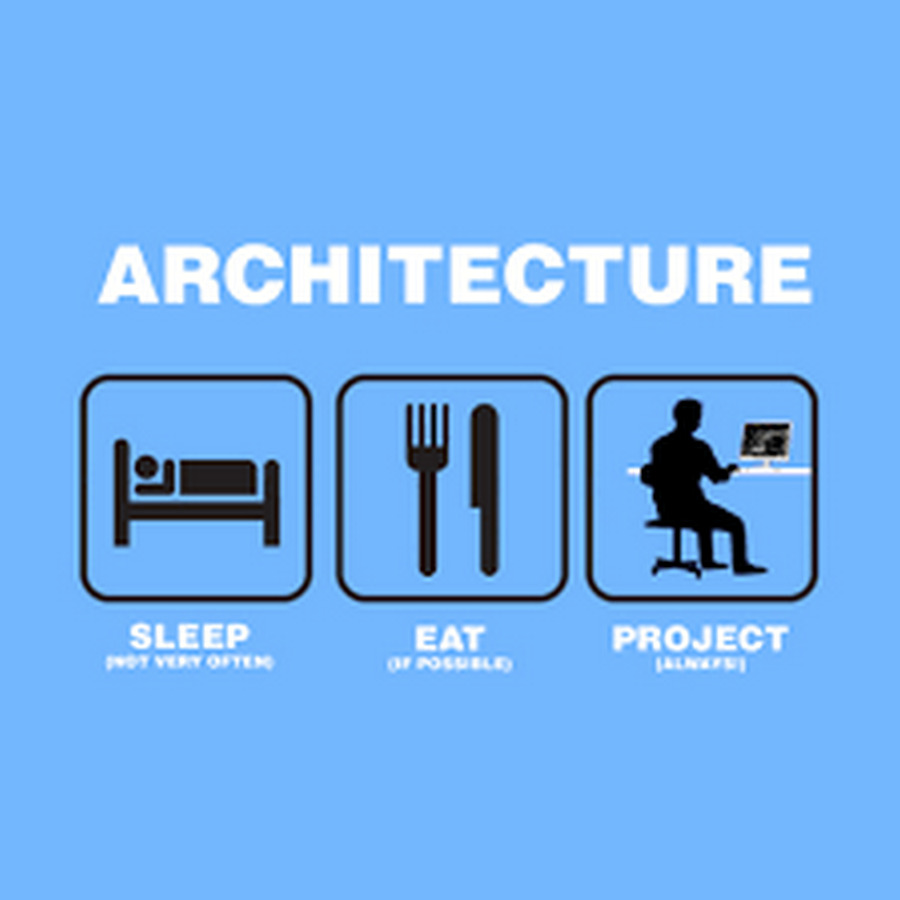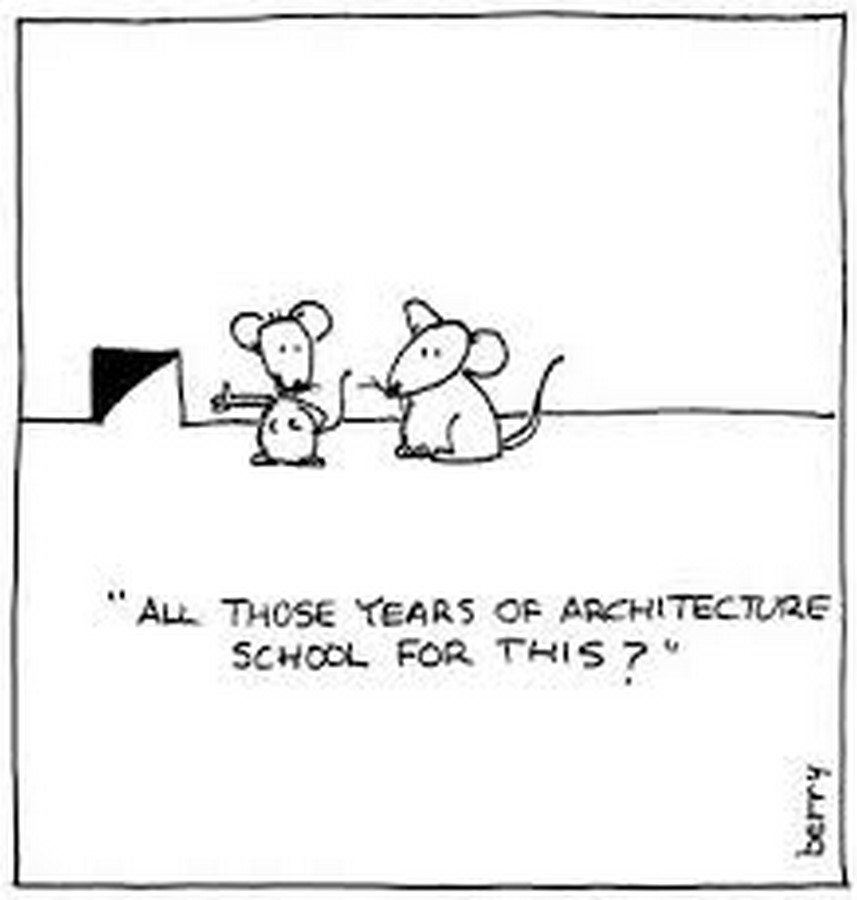“Design a flight of stairs for the day a nervous bride descends them. Shape a window to frame a view of a specific tree on a perfect day in autumn.” ― Matthew Frederick, 101 Things I Learned in Architecture School
In basic terms, Architecture is a profession that involves the designing of built structures, and sometimes landscape and urban planning. When looked upon in a broader context, it is an amalgamation of art and science, where the practice is a social responsibility towards building environments in aspiration for a better society. The Roman architect Vitruvius had started writing inscriptions about the subject since the 1st century AD but the profession and its learning centers are still surrounded by many misconceptions.
1. Students have to be proficient in hand drawings
There is no doubt that sketching is a great way to express a designer’s thoughts and ideas visually but a basic level of knowing how to draw shapes is sufficient enough to study architecture. Today’s technology, with its various computer-aided design software, allows the students to represent their ideas even if they are not particularly skilled in sketching. Architecture involves a lot more than good drawing skills. A student needs to have a good sense of analytical and logical reasoning along with a creative problem-solving attitude to excel in the profession.

2. Students have to be proficient at math
It is true that to make a successful building, an extensive amount of calculations concerning area planning, load sharing, wind movement, etc., are required but a basic knowledge of math is good enough to study architecture. In practice, most architects anyway work in collaboration with civil engineers who are particularly skilled in this part of the design process.

3. Architecture institutes don’t involve any studying
A lot of students take up architecture as a profession thinking that they won’t have to study anymore. In reality, learning the practice of architecture involves understanding various fields like design, construction, social studies, environmental planning, and many more. A stupendous amount of research at both micro and macro level is required during each stage of designing which then is executed with a huge amount of labor.

4. Architecture students party all the time
Our pop-culture and social media portray architects like a chic and eccentric group of people who party all the time. This phenomenon would be a dream come true but in reality, architecture students are always occupied with a humongous amount of work due to the time-consuming nature of their practice and don’t even have time to sleep. This myth probably stems from the fact that interaction helps in enhancing and streamlining creative thoughts and therefore, most students prefer to work in groups and have fun along the way.

5. It is a profession for men
Due to the notion that architecture is a rough and labor-intensive job, a lot of people seem to think that girls don’t make good architecture students. In actuality, being an architect is not a gender-specific role and this has been proved by legendary female architects like Zaha Hadid, Neri Oxman, Brinda Somaya, Anupama Kundoo, and many more. Nowadays more than 60% of the student population in architecture schools comprises women.

6. The end-result of a design is the most important
As opposed to other professional institutes, architecture colleges don’t function based on what is right and wrong. Design is a subjective matter and what seems exceptional to one might seem disastrous to another. Apart from a few fundamentals which are relevant to the design’s specific context, every configuration is created based on a line of thought. Therefore, in architectural institutes, the design process involved is given the same importance as the result, if not more.

7. Students will start earning substantially after graduating
To become an architect in India, a student has to study extensively for five years by putting in long hours and a massive amount of effort. This leads to the misconception that fresh graduates will start earning mighty salaries once they enter the professional world. In reality, architecture is not a very well-paying profession at the start of a career and it takes an enormous amount of years and experience to even come at par with the salaries of doctors, lawyers, engineers, or any other professionals.

8. Students only learn how to draw some lines
If every architect got a dime for each time this has been said, all of them would be millionaires. Architects are often referred to as high profile contractors, builders, and even carpenters. Many clients are not happy to pay the asked fee because they seem to believe that an architect’s job is to only draw a couple of lines on paper and the computer does the rest of the work. In actuality, to study architecture students also have to study the environment, geography, physics, socio-cultural and political issues, urban planning, and many other diverse topics so that their designs have the right impact on the society. Drawing lines is a means of communicating, and not learning.

9. Only the educational quality differs in different schools
Every architectural institute follows a unique school of thought which has a huge hand in framing the design ideologies of its young students. Since architecture is best learned interactively, the way an institute school of thought is crucial in shaping its student’s creative thinking and turning them into intellectuals.
“Yes, you can walk in—animals, dogs, everything; everything goes inside. And I think, what is wrong [with that]? We are in a world that is so generous and good. Holistic. Our philosophy is holistic. For us, life is in everything. So why not really continue it? Why create doors? Or why create restrictions? So I always wrote, in the [CEPT] campus, my whole idea was that an educational campus should be without doors. No boundaries. And that philosophy I continue.” – B.V. Doshi


10. Architecture and its study are not important when compared to other professional courses
Indeed, architects don’t cure diseases or fight for justice, but the field of design has a huge impact on our society and culture. Our built environment dictates our standard of living to a certain extent and architects continuously try to make efforts and establish platforms that can give way to a better society. Many institutes teach young architects to look into the matters of sustainability and to try and reform the practice with eco-friendly and local materials. This generation of students has also started to go back to the old ways of utilizing traditional crafts and conserving heritage. Nowadays, architecture is not about aesthetics, but about functionality.






























